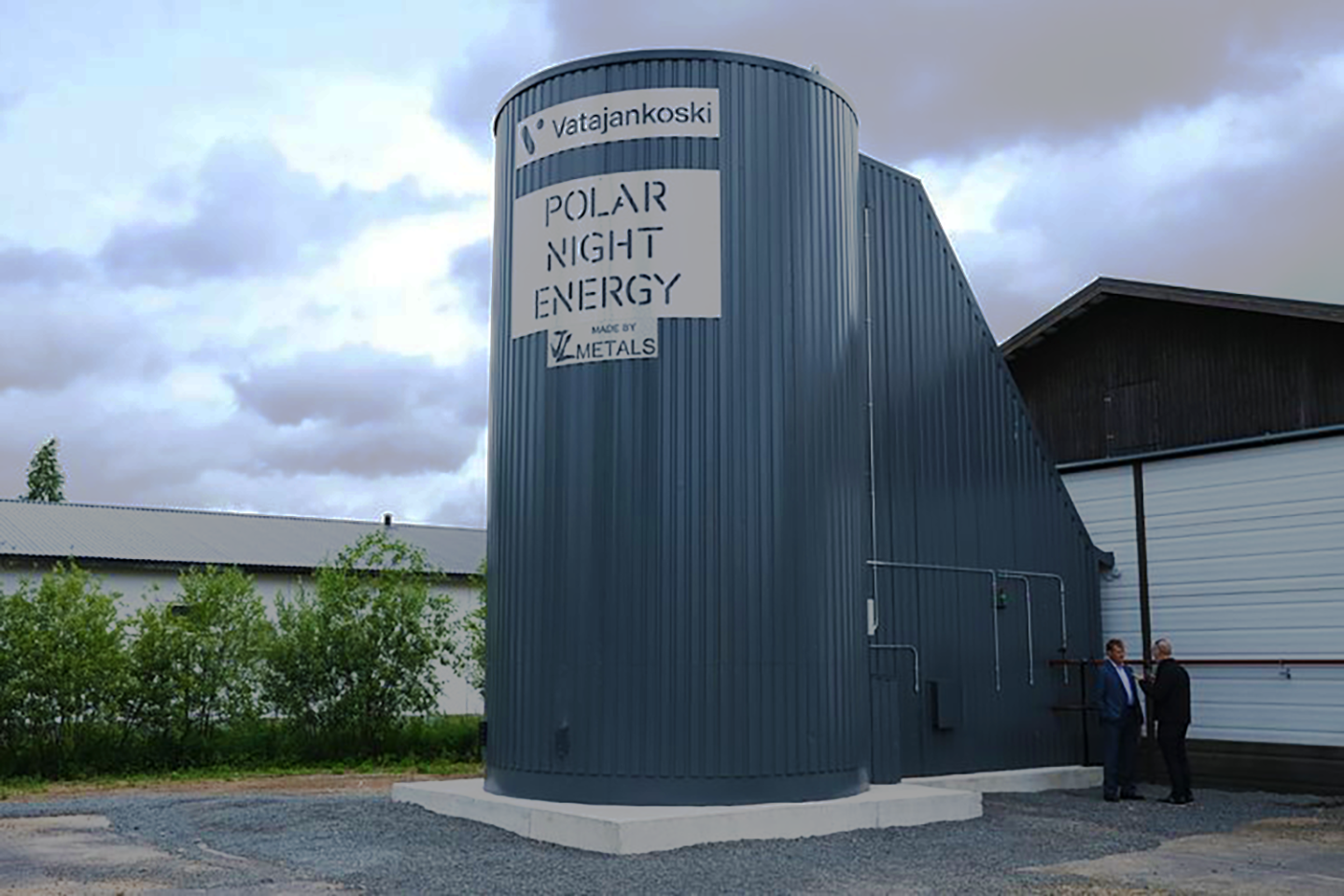A new industrial-scale 'sand battery' has been announced for Finland, which packs 1 MW of power and a capacity of up to 100 MWh of thermal energy for use during those cold polar winters. The new battery will be about 10 times bigger than a pilot plant that’s been running since 2022.
The sand battery, developed by Polar Night Energy, is a clever concept. Basically, it’s a big steel silo of sand (or a similar solid material) that’s warmed up through a heat exchanger buried in the center, using excess electricity from the grid – say, that generated during a spike from renewable sources, when it’s cheap.
That energy can then be stored for months at a time, with reportedly very little loss, before being extracted as heat on demand. This could theoretically be converted back into electricity, although with some energy loss. But Polar Night says that the most efficient method is to just use the heat itself.
In a chilly place like Finland, that means feeding it into the local district heating system, which shares heat produced from industry or energy production through the community. Networks of pipes carry this heat as hot water or steam to warm up houses, buildings, even swimming pools. In this case, the new sand battery would be trialed in the district heating system of the Finnish municipality of Pornainen, run by a company called Loviisan Lämpö.

This new sand battery is expected to stand 13 m (42.7 ft) tall and 15 m (49.2 ft) wide, providing an output power of 1 MW and a capacity of 100 MWh. That, the companies claim, equates to a week’s worth of Pornainen’s heat demands in winter, or a month’s worth in summer. By comparison, Polar Night’s previous sand battery stands 4 x 7 m (13 x 23 ft), for a nominal power rating of 100 kW and a capacity of 8 MWh.
The new battery should also reduce the carbon dioxide emissions of the district heating system by 160 tonnes per year, translating to an almost 70% reduction. The sand itself will also be sustainably sourced – it’ll consist of crushed soapstone, which is a manufacturing byproduct of another local industry. This material can apparently conduct heat even better than regular old sand.
While sand batteries might not find wide outside of areas that use district heating, they could still be one useful tool in a climate change toolbox that needs to be as diverse as possible. Sand batteries might join other grid-scale storage options like lithium-ion, gravity, molten salt, iron-air or flow batteries.
Polar Night Energy says the new sand battery will complete construction and testing in about 13 months.
Source: Polar Night Energy





